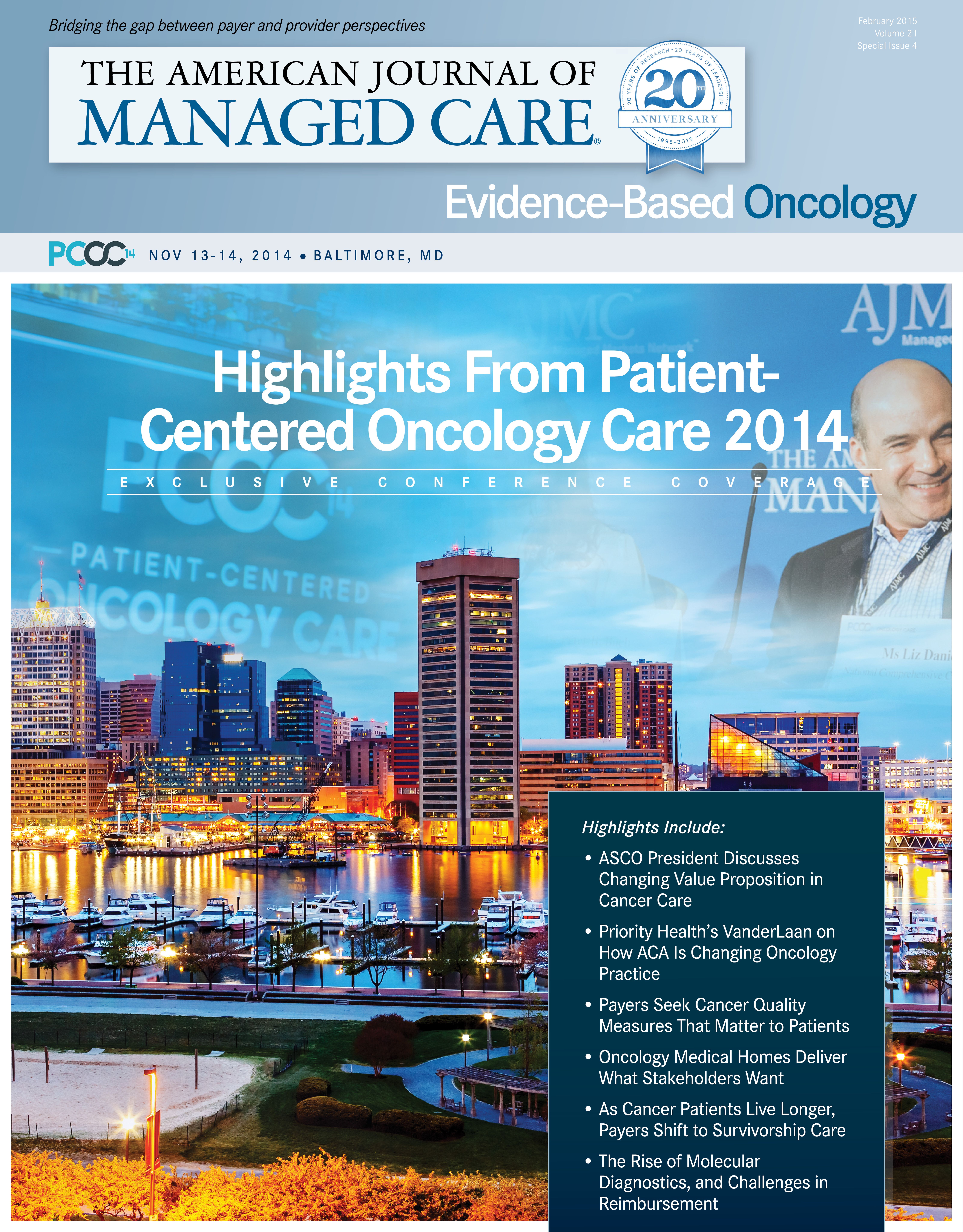Publication
Article
Evidence-Based Oncology
Surveys Find Agreement in What Stakeholders Want From Cancer Care, and Oncology Medical Homes Deliver
Author(s):
Evidence is mounting that the oncology medical home (OMH), in which cancer patients receive all of their treatments in a coordinated fashion through a single practice, lowers costs and maintains, or even improves, the quality of care. In his presentation, “Early Findings of the Oncology Medical Home,” Ted Okon, MBA, executive director of the Community Oncology Alliance, told stakeholders at Patient-Centered Oncology Care 2014, hosted by The American Journal of Managed Care in Baltimore, Maryland, that surveys, pilot studies, and conversations with patients, payers, and providers fundamentally agree on what each wants from cancer care—and the OMH satisfies them all.
Both Medicare and commercial insurers are clamoring for quality, cost control, accountability, and predictability, Okon said. In fact, surveys find that patients and providers want improvements in how care is delivered. The OMH, where one primary focus is avoiding unnecessary emergency department (ED) visits and hospital admissions, meets all of these goals. For example, surveys find patients want to be educated about their diagnosis and treatment; physicians want to be paid for cognitive services, such as treatment, survivorship planning, and end-of-life care; and providers demand productivity with a focus on survivorship.
“It is remarkably similar what the 3 stakeholders want,” Okon said. He presented a summary of a 3-year pilot study by UnitedHealthcare of 5 medical oncology groups that treated 810 patients with breast, colon, and lung cancers. The oncologists were reimbursed upfront for an entire cancer treatment program, regardless of the drugs administered to the patient, based on the expected cost of a standard treatment predetermined by the doctor. Patient visits were individually reimbursed using the fee-for-service contract rates, and chemotherapy treatments were reimbursed based on the average sales price. Although the pilot was designed to remove any incentive for prescribing costly cancer drugs, drug spending actually increased 275%, while overall costs per patient shrank 34%, primarily from reduced ED visits and hospital admissions.
Oncology practices typically coordinate care with all physicians treating their patients, which is a key feature of the OMH, but don’t provide 24-hour access for triage, the same level of information support, or measurements of quality, value, and patient satisfaction. The UnitedHealthcare pilot study found all of these factors to be essential for maintaining quality of care while simultaneously reducing costs.
“You have to change basic care processes,” Okon said. “This isn’t just saying you are going to change. You really have to change. The practice has to focus on change that, for example, keeps patients out of the ER and hospitals, and that requires an investment in technology and people. Timely, regular feedback from the payer are key.”
The Commission on Cancer has set a target of early 2015 for accrediting OMHs, which will include infrastructure and process requirements, specific measures of progress, data submission with benchmarking, and site surveys. “You can contain costs and increase quality, but don’t kid yourself; this takes work,” Okon said.







